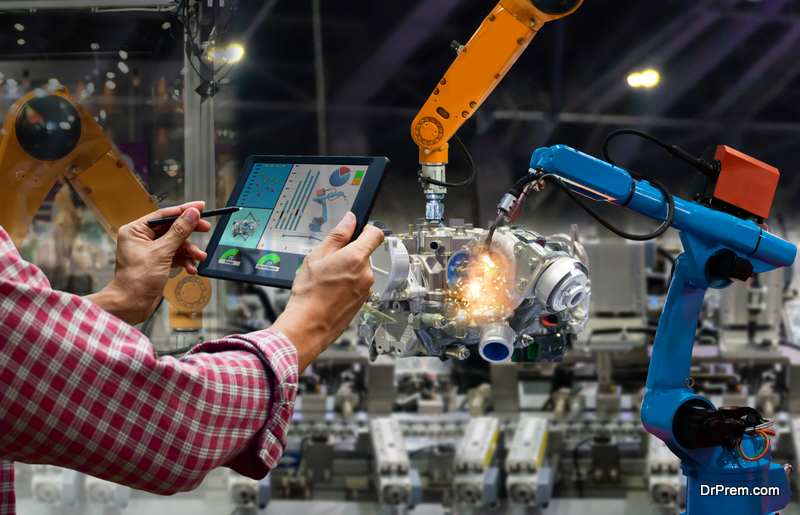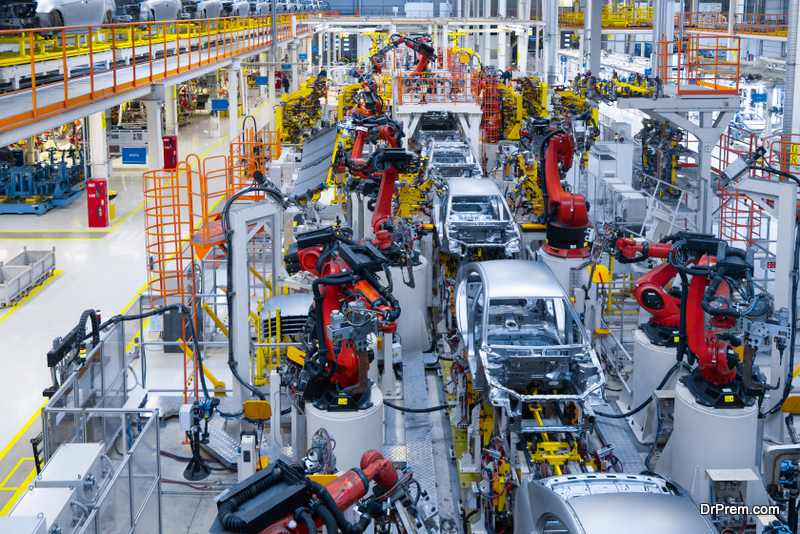We’ve heard a lot of talk about sustainability over the last few years as more companies try to limit their effect on the environment. Industry, including manufacturing, currently accounts for 21 percent of all carbon emissions in the U.S., one of the biggest contributors to global warming and climate change.
If you’re in the manufacturing industry, you can do your part to lower your company’s carbon emissions by creating a more sustainable manufacturing process. Regardless of what your company manufactures, there are ways to reduce your effect on the environment.
Here are six steps you can take toward making your manufacturing business more sustainable.
1. Audit Your Energy Use
 Fossil fuels like coal and natural gas are the main reasons global warming and climate change exist in the first place. Considering fossil fuels account for 78 percent of all energy production here in the U.S., chances are your factory or manufacturing plant uses these resources to power its operations. That’s why it’s important to limit your use of fossil fuels as much as possible. But you won’t know how much energy your company is using unless you conduct regular energy audits.
Fossil fuels like coal and natural gas are the main reasons global warming and climate change exist in the first place. Considering fossil fuels account for 78 percent of all energy production here in the U.S., chances are your factory or manufacturing plant uses these resources to power its operations. That’s why it’s important to limit your use of fossil fuels as much as possible. But you won’t know how much energy your company is using unless you conduct regular energy audits.
You can start by contacting your utility company to see how your energy bills have changed over the years. Is your company’s energy usage going up month after month? Many utility companies across the country offer free online assessment tools that track your energy usage and offer suggestions on how to lower you monthly payment, like the Business Energy Checkup tool from PG&E.
2. Invest in Recycled Materials
Every time your company orders new materials from your suppliers, you’re taking precious resources from the environment — including all the energy that’s used to make these materials and have them delivered to your manufacturing plant. But instead of creating these materials from scratch, you can find suppliers that manufacture products from recycled materials, such as glass, steel, plastic and paper.
By switching to recycled materials, your company will close the manufacturing loop, which means you’ll have a neutral effect on the environment as you reuse products instead of filling up the local landfill. Using recycled manufacturing materials can help you position your company as a leader in sustainable manufacturing. A simple “made from recycled materials” label can help you woo customers that care about the environment. Some of your customers will appreciate the fact that your company isn’t generating waste.
3. Switch to Reusable Storage Containers
 If you’re going to invest in recycled manufacturing materials, why invest in wasteful storage and packaging materials that have to be disposed of after every use? When your company is processing and manufacturing thousands of products a day, choosing used shipping containers and packaging can make all the difference. Instead of tossing a used cardboard box into the trash o recycling bin, you can use plastic bins and totes over and over to save money. You won’t have to worry about buying new packaging and storage materials. Just wipe down the container or hose it off, and you can keep using it for years to come.
If you’re going to invest in recycled manufacturing materials, why invest in wasteful storage and packaging materials that have to be disposed of after every use? When your company is processing and manufacturing thousands of products a day, choosing used shipping containers and packaging can make all the difference. Instead of tossing a used cardboard box into the trash o recycling bin, you can use plastic bins and totes over and over to save money. You won’t have to worry about buying new packaging and storage materials. Just wipe down the container or hose it off, and you can keep using it for years to come.
4. Produce Your Own Supply of Clean Energy
With fossil fuel consumption eating away at the environment, one of the best things you can do for your business is to invest in clean energy. Solar energy will likely make the most sense for your company. You can either buy or lease solar panels and attach them to the roof if your facility receives a fair amount of sunshine. Your facility will then generate its own electricity. If your company produces more energy than it needs, you can always pump that electricity back into the grid and receive a stipend from your local utility company.
Aside from the initial investment in solar panels, your company won’t have to worry about paying costly electricity bills, and you may even make money off your investment. If there’s ever a widespread power outage, your company will still have a way to generate electricity, so you’ll always be able to meet the needs of your customers.
5. Upgrade to Energy-Efficient Equipment
 Take a look around your facility and you may notice that some of your manufacturing equipment could use a facelift. Some pieces of machinery are far less energy-efficient than the latest models. By not upgrading your equipment, your company will have to pay more for electricity. These older pieces of equipment will also be more susceptible to breakdowns and repairs than newer models. Your company can save money over the long term by updating your facility’s equipment sooner rather than later. Instead of shelling out money to repair these older models, invest in new machinery that will improve your operations and lower your utility bills.
Take a look around your facility and you may notice that some of your manufacturing equipment could use a facelift. Some pieces of machinery are far less energy-efficient than the latest models. By not upgrading your equipment, your company will have to pay more for electricity. These older pieces of equipment will also be more susceptible to breakdowns and repairs than newer models. Your company can save money over the long term by updating your facility’s equipment sooner rather than later. Instead of shelling out money to repair these older models, invest in new machinery that will improve your operations and lower your utility bills.
6. Monitor the Performance of Your Equipment
If you’re not sure about when your equipment should be replaced, you can use smart equipment performance monitors that tell you what’s going on behind the scenes. These monitors track the energy use of your equipment and their overall performance, so you can identify and resolve these issues in real time. If your company is like most, you’ll need to crunch the numbers before you invest in a new piece of machinery that costs thousands of dollars. But with these performance monitoring tools, you can quickly find out how much some of these older models are costing your company. Once you do the math, you may realize that investing in a new piece of equipment now is more cost efficient than waiting years. Based on this equipment performance data, you can also repair inefficient machines, so you won’t have to pay for more electricity.
Strive Towards Sustainability Today
There’s never been a better time to invest in sustainable manufacturing. These steps will help you save money throughout the manufacturing process. You can also identify issues with your equipment and operations, which helps prevent unexpected breakdowns and costly delays. The more you know about your company’s manufacturing process, the more you can limit your company’s effect on the environment. Use these steps to position your company as a leader in sustainable manufacturing.
Article Submitted By Community Writer


